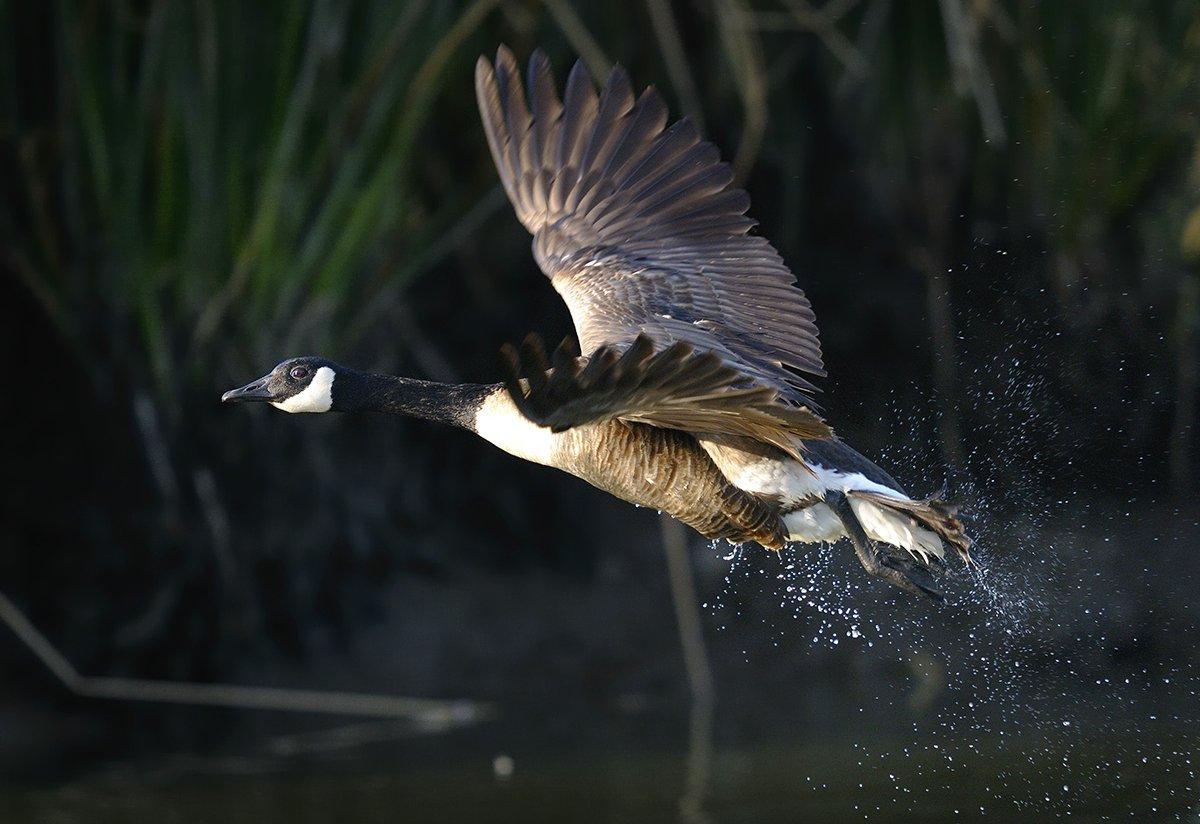Up your game to score on tough local geese this season
When they loaf at a park or munch oats in a field near a highway, local Canada geese might seem like the easiest opportunity in waterfowling.
And then opening day arrives, and those familiar geese flare, land out of range, ignore your spread or switch locations, leaving you scratching your head and birdless on the easiest day of the season.
I've been there, man. Trust me, local honkers are no slam-dunk. Executing a successful opening day requires sharp thinking, adaptive scouting and an almost obsessive attention to detail. Use these four tips to score early and often this year.
Look Early, Scout Late
In my area, honkers usually start feeding in fields during late July or early August, right after yearling birds can fly, adults have finished molting and the first cereal grains — typically oats, rye or wheat — have been cut. You'll find similar situations throughout the country.
Here's the catch, though. It doesn't take long for a family group or two of geese to clean out an 80-acre field, and those birds will relocate to another food source after doing so — seemingly overnight. The sure-thing flocks you've watched during scouting runs for three weeks might disappear the day before the opener. To complicate matters, more food — corn cut for silage and fresh-cut hay fields, for example — becomes available to geese as late summer and fall progresses, further muddying the waters.
Friends and I used to witness this phenomenon every year before the early season, often leaving us scrambling for opening-day options. One buddy joked that he'd only start scouting for geese the day before the season, as it was foolish to do otherwise. The solution? Scout fields rather than the first birds in fields. That is, identify possible early-season food options — wheat, corn, hay, whatever — well before it's cut, even in early summer. Then, check these areas frequently before the opener, even if another field is attracting every goose in the county. That way, you might be a step ahead when honkers abandon the X and seek other chow destinations.
Match Your Cover, and Cheat
Local Canada geese don't miss much. If something seems out of place in their favorite field — say some odd blobs near a group of geese — they won't swing by to investigate. Cover and concealment are critical, especially when hunting family flocks led by sharp-eyed adult birds.
Whether you use a field blind or lay prone in the decoys, you must match your surroundings. That can be incredibly difficult in a harvested oat field, which might resemble a golden putting green.
Always try to collect harvest waste — loose wheat hay, for example — in the field for concealment. If you can't find any, use weeds or grasses from nearby ditches or meadows, provided they match the cover in the ag field. Or better, be proactive, and obtain cover beforehand from other sources, such as buying bale of hay for concealment in a rye field.
And cheat whenever possible. Hide in any available cover near the X, whether it's standing corn, a tiny woodlot, an unharvested bean field, a grassy fence line or even a rock pile. You won't always find such areas in or near hot fields, so take advantage when you do.
Remember the Early Birds
Consider the geese you typically hunt early in the season, and set your decoys accordingly. Often, you're trying to fool family groups, especially in late-August and early-September seasons. So, instead of throwing out a loose J or other bland spread, reflect the scenario, and place your decoys in small bunches to imitate several feeding family groups. The three-blob approach — one behind and covering the blinds, and one each at 10 and 2 o'clock — usually works well.
Modify your spreads as conditions change. In the North, that starts with the molt migration, which sees the return of large groups of birds — mostly juvenile non-breeding geese — that flew north to boreal areas in summer to molt. As these and then early migrating geese arrive, you can add depth and numbers to your spread.
Honk if You Must
You practiced on that short-reed call all summer, and you're pretty good. Moreover, you're ready to use it when the first geese circle your spread.
Hold on a minute, cowboy. Before you start double-clucking, see how birds act. Remember, if you're hunting a feeding destination, birds want to be there anyway. Also, early-season geese aren't always vocal. If birds stay relatively quiet and circle toward your spread, you might want to keep that call in your pocket, or limit your vocalizations to a few soft clucks or grunts.
Of course, when birds don't finish or seem leery of your setup, get on that call to entice them. Take your cue from the first flock or two of the day. If birds seem chatty or need to be convinced, talk to them. But if they're quiet and still eager to decoy, get ready to shoot, and save the calling for another morning.
Hunt Locally
Enjoy the first geese of fall (or late summer). Local birds provide great sporting opportunities and incredible grain-fed meat. Paying attention to small details will give you more chances at both.
Click here for more Realtree waterfowl hunting content. And check us out on Facebook.








